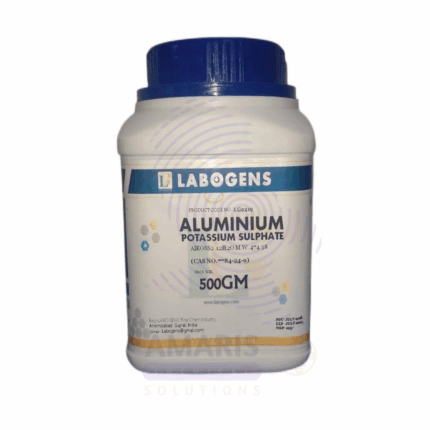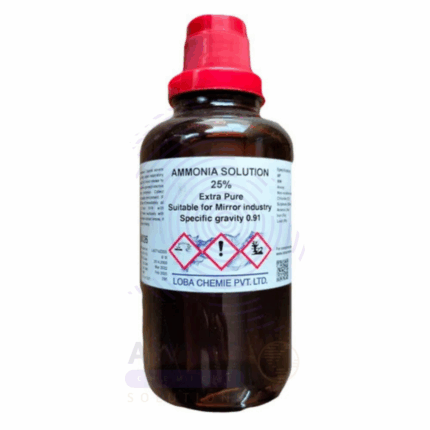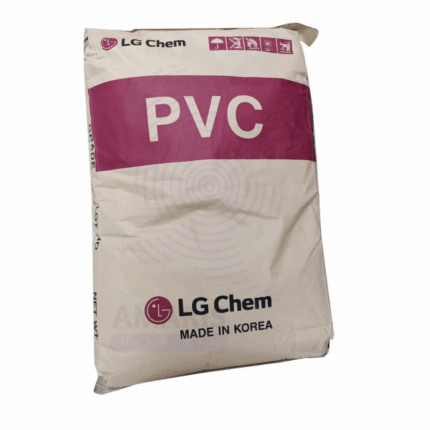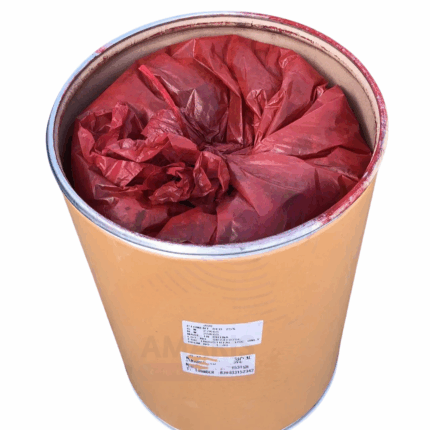
Aluminium Potassium Sulphate Hydrated Extra Pure
$ 19.00 Original price was: $ 19.00.$ 18.74Current price is: $ 18.74.

Ammonia Solution Extra Pure
$ 31.00 Original price was: $ 31.00.$ 30.23Current price is: $ 30.23.
N-Butanol
Whatsapp Order
N-Butanol (1-butanol) is a four-carbon linear alcohol with the chemical formula C₄H₉OH. It is a colorless, flammable liquid with a mild, alcoholic odor. N-Butanol is widely used as a solvent in paints, coatings, adhesives, and chemical synthesis. It serves as an intermediate in the manufacture of plasticizers, butyl acrylate, and other chemicals. Its moderate volatility and solvent properties make it valuable in industrial and commercial applications.
Categories: Additives, CLEANING AND DETERGENT CHEMICALS, LABORATORY CHEMICALS, PAINT & COATINGS CHEMICALS, PHARMACEUTICAL CHEMICALS, Plasticizers, PLASTICS AND POLYMER MANUFACTURING CHEMICALS, Solvents (Cleaning), Solvents(lab), Solvents(paint), Solvents(pharmaceutical)
Tags: Butyl alcohol, Industrial solvent, N-Butanol, Normal Butanol, Paints & Coatings, Plasticizer Intermediate
Description
Table of Contents
Toggle
Primary Uses
- Solvent in Paints and Coatings
- Used as a solvent for nitrocellulose, alkyd, and cellulose acetate coatings to improve flow and drying characteristics.
- Enhances gloss and adhesion of paints and varnishes.
- Chemical Intermediate
- Utilized in the production of butyl acrylate, plasticizers, and glycol ethers.
- Serves as a raw material in the synthesis of pharmaceuticals and agrochemicals.
- Adhesives and Sealants
- Acts as a solvent in adhesive formulations for improved consistency and drying time.
- Cleaning Agent
- Employed in industrial cleaning formulations due to its solvency and low toxicity compared to other solvents.
Secondary Uses
- Cosmetics and Personal Care
- Used in small quantities as a solvent in perfumes and fragrances.
- Extractants
- Used in extraction processes in the pharmaceutical and chemical industries.
- Fuel Additive
- Occasionally used as a fuel additive or blending component in gasoline to improve combustion properties.
- Laboratory Solvent
Used in chemical laboratories for reagent preparation and sample processing.
KEY PRODUCT FEATURES
Key Attributes
Basic Identification Attributes
- Chemical Name (IUPAC): Butan-1-ol
- Common/Trade Name: N-Butanol, 1-Butanol
- CAS Number: 71-36-3
- HS Code: 2905.43.00
- Synonyms: n-Butyl alcohol; 1-Butanol
Physical & Chemical Properties
- Physical State: Clear, colorless liquid
- Color & Odor: Colorless; mild alcoholic odor
- Boiling Point: 117.7°C
- Melting Point: -89.5°C
- Density: 0.81 g/cm³ at 20°C
- Solubility: Slightly soluble in water; miscible with most organic solvents
- Flash Point: 35°C (closed cup)
Safety & Hazard Attributes
- GHS Classification: Flammable liquid (Category 3)
- Toxicity: Moderate toxicity; can cause irritation to skin and eyes
- Exposure Limits: OSHA PEL 100 ppm; ACGIH TLV 20 ppm (TWA)
Storage & Handling Attributes
- Storage Conditions: Store in a cool, well-ventilated area away from sources of ignition
- Container Type: Supplied in metal or plastic drums and containers
- Shelf Life: Typically 1 year if stored properly
- Handling Precautions: Use explosion-proof equipment; avoid inhalation and skin contact
Regulatory & Compliance Attributes
- Complies with REACH, OSHA, EPA, and other relevant chemical safety regulations
- Listed in major chemical inventories worldwide
Environmental & Health Impact
- Biodegradability: Readily biodegradable
- Ecotoxicity: Moderate aquatic toxicity; avoid release into waterways
- Bioaccumulation: Low potential for bioaccumulation
Carcinogenicity/Mutagenicity: Not classified as carcinogenic
SAFETY HANDLING PRECAUTIONS
Safety Handling Precautions
- PPE Required: Gloves, goggles, and flame-resistant clothing recommended
- Handling Guidelines: Use in well-ventilated areas; avoid ignition sources
- Storage Measures: Keep containers tightly closed; store away from oxidizers
First Aid Measures
- Inhalation: Move to fresh air; seek medical attention if symptoms persist
- Skin Contact: Wash with soap and water; remove contaminated clothing
- Eye Contact: Rinse immediately with water for at least 15 minutes; seek medical help
- Ingestion: Do not induce vomiting; seek immediate medical attention
Firefighting Measures
- Fire Hazards: Flammable liquid and vapor
- Extinguishing Media: Use foam, dry chemical, or CO₂ extinguishers
- Special Precautions: Wear self-contained breathing apparatus (SCBA) and protective gear
- Hazardous Combustion Products: Carbon oxides, aldehydes
Related products
Parallizer (UFABLEND)
Product Description
Parallizer (UFABLEND) is a versatile liquid paralytic agent used primarily in the formulation of pesticides and herbicides to enhance the immobilization of target pests. It acts by disrupting the nervous system of insects and other pests, providing quick knockdown effects. UFABLEND is valued for its fast action, compatibility with other agrochemicals, and stability under various environmental conditions.PIGMENT ORANGE 20%
Product Description
Pigment Orange 20% is a concentrated dispersion of synthetic orange pigment particles in a suitable carrier, designed to deliver bright, vivid orange coloration. It offers excellent stability, heat resistance, and chemical inertness, making it suitable for diverse industrial applications including paints, plastics, inks, and coatings. This pigment ensures consistent color strength and durability across a variety of substrates.
PP Raffia 1003
PP Raffia 1003 is a polypropylene homopolymer resin commonly used for manufacturing raffia fibers and woven sacks. It offers high tensile strength, excellent dimensional stability, and good resistance to chemicals and environmental stress. This grade is ideal for producing durable woven fabrics used in packaging, agriculture, and construction applications.
Propylene PP Non Woven RH 38
Propylene PP Non Woven RH 38 is a polypropylene-based non-woven fabric known for its strength, durability, and lightweight properties. Manufactured through a process that binds polypropylene fibers without weaving, it results in a fabric that is breathable, resistant to chemicals and moisture, and highly versatile. This product is widely used in various industrial, medical, and consumer applications where disposable or reusable fabric is needed.
PVC Masterbatch
PVC Masterbatch is a concentrated mixture of pigments, additives, or fillers encapsulated in a PVC carrier resin, designed for direct addition into PVC processing applications. It offers an efficient and dust-free way to color, modify, or enhance the physical properties of PVC products. This masterbatch ensures excellent dispersion, consistent coloration, and improved processability. It is widely used in rigid and flexible PVC applications including construction, automotive, packaging, electrical, and consumer products.
PVC Resin 702
PVC Resin 702 is a high molecular weight, suspension-grade polyvinyl chloride resin with a K-value around 70–72. It is specifically formulated for use in soft and flexible PVC products due to its excellent plasticizer absorption and high mechanical strength. Its superior elongation, thermal stability, and processability make it highly suitable for calendaring, extrusion, injection molding, and dip molding operations. PVC Resin 702 is extensively used across the cable, synthetic leather, film, and footwear industries.
Solvent oil red 24 OSH
Solvent Oil Red 24 OSH is a bright, oil-soluble azo dye used primarily for coloring petroleum-based solvents, oils, waxes, and greases. Known for its excellent solubility in hydrocarbon mediums, this dye delivers a vivid red hue with good thermal stability and moderate lightfastness. Its OSH (Oil Soluble High) formulation ensures optimized dispersion in non-polar systems.
Solvent Oil Red 24 OSH is used in applications requiring visual identification, fuel marking, and product differentiation across industrial environments. It is available in powdered or granulated form and is manufactured to meet industrial-grade quality standards.
Styrene Acrylic
Styrene Acrylic is a copolymer emulsion combining styrene and acrylic monomers, widely used as a versatile binder in coatings, adhesives, and construction materials. It offers excellent film-forming properties, adhesion, water resistance, and durability. This product enhances the performance and longevity of paints, sealants, textiles, and paper coatings, with flexibility for both indoor and outdoor applications. Styrene Acrylic emulsions are designed to meet stringent industrial and environmental standards.


 Preservatives(food)
Preservatives(food) Flavor Enhancers
Flavor Enhancers Acidulants
Acidulants Sweeteners
Sweeteners Antioxidants
Antioxidants Colorants(food)
Colorants(food) Nutraceutical Ingredients (food)
Nutraceutical Ingredients (food) Nutrient Supplements
Nutrient Supplements Emulsifiers
Emulsifiers
 Collectors
Collectors Dust Suppressants
Dust Suppressants Explosives and Blasting Agents
Explosives and Blasting Agents Flocculants and Coagulants
Flocculants and Coagulants Frothers
Frothers Leaching Agents
Leaching Agents pH Modifiers
pH Modifiers Precious Metal Extraction Agents
Precious Metal Extraction Agents
 Antioxidants(plastic)
Antioxidants(plastic) Colorants (Pigments, Dyes)
Colorants (Pigments, Dyes) Fillers and Reinforcements
Fillers and Reinforcements Flame Retardants
Flame Retardants Monomers
Monomers Plasticizers
Plasticizers Polymerization Initiators
Polymerization Initiators Stabilizers (UV, Heat)
Stabilizers (UV, Heat)
 Antifoaming Agents
Antifoaming Agents Chelating Agents
Chelating Agents Coagulants and Flocculants
Coagulants and Flocculants Corrosion Inhibitors
Corrosion Inhibitors Disinfectants and Biocides
Disinfectants and Biocides Oxidizing Agents
Oxidizing Agents pH Adjusters
pH Adjusters Scale Inhibitors( water)
Scale Inhibitors( water)
 Antioxidants(cosmetic)
Antioxidants(cosmetic) Emollients
Emollients Fragrances and Essential Oils
Fragrances and Essential Oils Humectants
Humectants Preservatives
Preservatives Surfactants(cosmetic)
Surfactants(cosmetic) Thickeners
Thickeners UV Filters
UV Filters
 Fertilizers
Fertilizers Soil Conditioners
Soil Conditioners Plant Growth Regulators
Plant Growth Regulators Animal Feed Additives
Animal Feed Additives Biostimulants
Biostimulants Pesticides (Herbicides, Insecticides, Fungicides)
Pesticides (Herbicides, Insecticides, Fungicides)
 Active Pharmaceutical Ingredients (APIs)
Active Pharmaceutical Ingredients (APIs) Excipients
Excipients Solvents(pharmaceutical)
Solvents(pharmaceutical) Antibiotics
Antibiotics Antiseptics and Disinfectants
Antiseptics and Disinfectants Vaccine Adjuvants
Vaccine Adjuvants Nutraceutical Ingredients (pharmaceutical)
Nutraceutical Ingredients (pharmaceutical) Analgesics & Antipyretics
Analgesics & Antipyretics
 Analytical Reagents
Analytical Reagents Solvents(lab)
Solvents(lab) Chromatography Chemicals
Chromatography Chemicals Spectroscopy Reagents
Spectroscopy Reagents microbiology-and-cell-culture-reagents
microbiology-and-cell-culture-reagents Molecular Biology Reagents
Molecular Biology Reagents Biochemical Reagents
Biochemical Reagents Inorganic and Organic Standards
Inorganic and Organic Standards Laboratory Safety Chemicals
Laboratory Safety Chemicals Specialty Laboratory Chemicals(Special Laboratory Equipment)
Specialty Laboratory Chemicals(Special Laboratory Equipment)
 Demulsifiers
Demulsifiers Hydraulic Fracturing Fluids
Hydraulic Fracturing Fluids Scale Inhibitors(oil)
Scale Inhibitors(oil) Surfactants(oil)
Surfactants(oil) Drilling Fluids
Drilling Fluids
 Dyes and Pigments
Dyes and Pigments Bleaching Agents
Bleaching Agents Softening Agents
Softening Agents Finishing Agents
Finishing Agents Antistatic Agents
Antistatic Agents
 Admixtures
Admixtures Waterproofing Agents
Waterproofing Agents Sealants and Adhesives
Sealants and Adhesives Curing Compounds
Curing Compounds Concrete Repair Chemicals
Concrete Repair Chemicals Anti-Corrosion Coatings
Anti-Corrosion Coatings
 Surfactants(cleaning)
Surfactants(cleaning) Builders
Builders Enzymes
Enzymes Solvents (Cleaning)
Solvents (Cleaning) Fragrances
Fragrances
 Electronic Chemicals
Electronic Chemicals Catalysts
Catalysts Lubricants
Lubricants Photographic Chemicals
Photographic Chemicals Refrigerants
Refrigerants Automotive chemicals
Automotive chemicals Pyrotechnic Chemicals
Pyrotechnic Chemicals
 Biodegradable Surfactants
Biodegradable Surfactants Bio-based Solvents
Bio-based Solvents Renewable Polymers
Renewable Polymers Carbon Capture Chemicals
Carbon Capture Chemicals Wastewater Treatment Chemicals
Wastewater Treatment Chemicals
 Pigments
Pigments Solvents(paint)
Solvents(paint) Specialty Coatings
Specialty Coatings Binders/Resins
Binders/Resins Additives
Additives Driers
Driers Anti-Corrosion Agents
Anti-Corrosion Agents Functional Coatings
Functional Coatings Application-Specific Coatings
Application-Specific Coatings
 Fresh Herbs
Fresh Herbs Ground Spices
Ground Spices Whole Spices
Whole Spices Spice Blends
Spice Blends Dried Herbs
Dried Herbs
 Leavening Agents
Leavening Agents Dough Conditioners
Dough Conditioners Flour Treatments
Flour Treatments Fat Replacers
Fat Replacers Decoratives
Decoratives Preservatives(baking)
Preservatives(baking)
 Plasticizers & Softeners
Plasticizers & Softeners Reinforcing Agents
Reinforcing Agents Adhesion Promoters
Adhesion Promoters Vulcanizing Agents
Vulcanizing Agents Antidegradants
Antidegradants Blowing Agents
Blowing Agents Fillers & Extenders
Fillers & Extenders Accelerators & Retarders
Accelerators & Retarders























